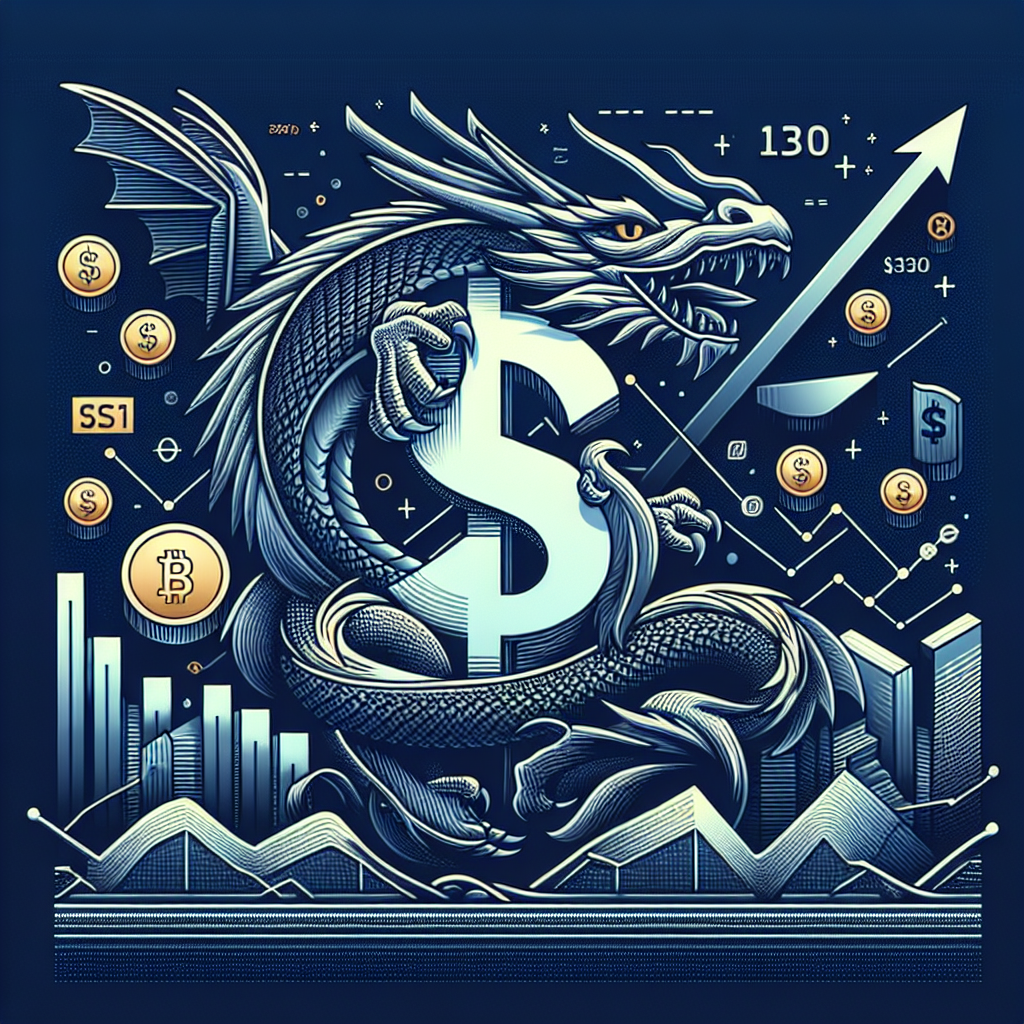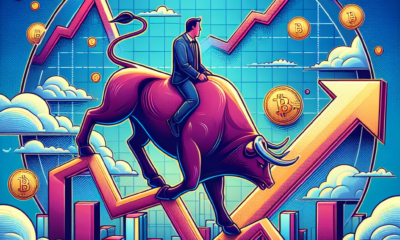Altcoins
Goldman Sachs Predicts Dollar Decline Amid Tariff Pressures and Economic Slowdown

Goldman Sachs has recently issued a stark warning regarding the future of the U.S. dollar, predicting a significant decline amid rising tariffs and stagnating economic growth. This assessment comes as the financial giant highlights how increasing trade barriers and a deceleration in domestic economic activity are undermining investor confidence and challenging the dollar’s longstanding status as the world’s primary reserve currency.
Investor sentiment has been shifting dramatically, influenced by recent tariff escalations that have introduced uncertainty into international trade. These tariffs, designed ostensibly to protect American industries, have inadvertently raised costs on imported goods, impacting businesses and consumers alike. In a time when economic expansion appears to be losing momentum, many are questioning the effectiveness of current trade policies. As businesses adjust to these tariff implications, a ripple effect is being felt throughout the economy, ultimately reshaping perspectives on the viability of continued dollar strength.
Economic data reflects a worrying trend: the U.S. GDP growth rate has plateaued, with the most recent figures showing projections around 2.5%—a decrease from previous years. The consequences of this slowdown extend beyond mere numbers; they directly affect employment rates, consumer spending, and business investments. Goldman Sachs emphasizes that as economic growth falters, the allure of the dollar diminishes, leading investors to explore alternative currencies and assets. This pivot is particularly crucial as markets witness fluctuations in global currencies influenced by geopolitical tensions and economic policies.
Concerns surrounding U.S. trade dynamics are compounded by external pressures, including competitive devaluations from other nations aiming to boost their own exports. As trading partners navigate their challenges, the resilience of the dollar is tested. Countries like China and members of the European Union are adopting measures to strengthen their currencies, which could have long-term ramifications for the dollar’s exchange rate. Goldman Sachs projects a potential depreciation in the dollar of around 5% to 6% if these trends persist.
In this context, emerging markets have begun to attract increased foreign investment, providing investors with attractive alternatives to dollar-denominated assets. The trend towards diversification of portfolios away from U.S. assets reflects a fundamental shift in global finance, where trust in the dollar is being reevaluated. Goldman Sachs highlights that a sustained lack of confidence could precipitate a broader financial crisis, further accelerating the dollar’s decline.
Moreover, federal policies that exacerbate trade tensions could force the U.S. economy into a period of stagnation, driving further declines in the dollar’s value. Investors recognize that as trade relations grow increasingly fraught, the potential for inflation rises, complicating monetary policy decisions made by the Federal Reserve. Should the U.S. Central Bank opt to raise interest rates significantly to combat inflation, it could inadvertently deepen the economic slowdown by stifling borrowing and spending.
In light of these developments, analysts at Goldman Sachs are advocating for streamlined trade agreements and a reassessment of tariff strategies. A collaborative approach to international trade could help restore trust in the dollar and contribute to economic stabilization. They argue that fostering positive relationships with trade partners may enhance global market confidence, thereby reinforcing the dollar’s position.
Potential legislative initiatives aimed at bolstering domestic industries must balance protectionist interests with the need for competitive engagement in global markets. Policymakers face the challenge of managing short-term gains through tariffs while considering long-term implications for economic health and currency stability.
The current geopolitical landscape, characterized by economic rivalry and a push for self-sufficiency in various countries, further complicates the U.S. dollar’s outlook. As nations continue to embrace economic nationalism, the interconnectedness of global economies is under strain, posing risks to the foundational principles of international trade.
As we look towards the future, the implications of Goldman Sachs’ findings are profound. The trajectory of the dollar is no longer a straightforward narrative; instead, it encompasses a complex interplay of economic indicators, trade policies, and investor sentiment. For individuals, businesses, and economies worldwide, understanding these dynamics will prove crucial as they navigate a landscape increasingly defined by uncertainty.
Investors and policymakers alike are urged to remain vigilant and proactive, focusing on both immediate and future risks. Maintaining economic momentum while cultivating an environment conducive to trade and investment will be vital in preserving the dollar’s status. As the U.S. grapples with these challenges, the saga of the dollar’s resilience continues—one that holds significance for economies around the globe.
-

 Press Releases1 year ago
Press Releases1 year agoGaming Technologies of the New Time!
-

 Altcoins9 months ago
Altcoins9 months agoBitcoin Declines Below $80K: deVere CEO Nigel Green Remains Bullish on Long-Term Outlook Following Strategic U.S. Bitcoin Reserve Announcement
-

 Bitcoin1 year ago
Bitcoin1 year agoBitcoin Surges Past $64K as SEI and POPCAT Lead Daily Crypto Gains on September 25
-

 Altcoins8 months ago
Altcoins8 months agoCalls for Enhanced Discussion on Bitcoin as Brazil’s Reserve Asset: A Move Towards ‘Internet’s Gold’
-

 Press Releases2 years ago
Press Releases2 years agoEvo Exchange: Redefining the Decentralized Exchange Landscape
-

 Bitcoin5 months ago
Bitcoin5 months agoGrayscale Investments Submits Draft Registration for IPO, Aiming for Public Trading in U.S.
-

 Press Releases1 year ago
Press Releases1 year agoCODE, a Newly Born Project Brings Decentralization Back to the Main Menu
-

 Bitcoin4 months ago
Bitcoin4 months agoPeter Schiff Critiques New Crypto Legislation, Claims Bitcoin (BTC) Gains are Short-Lived




